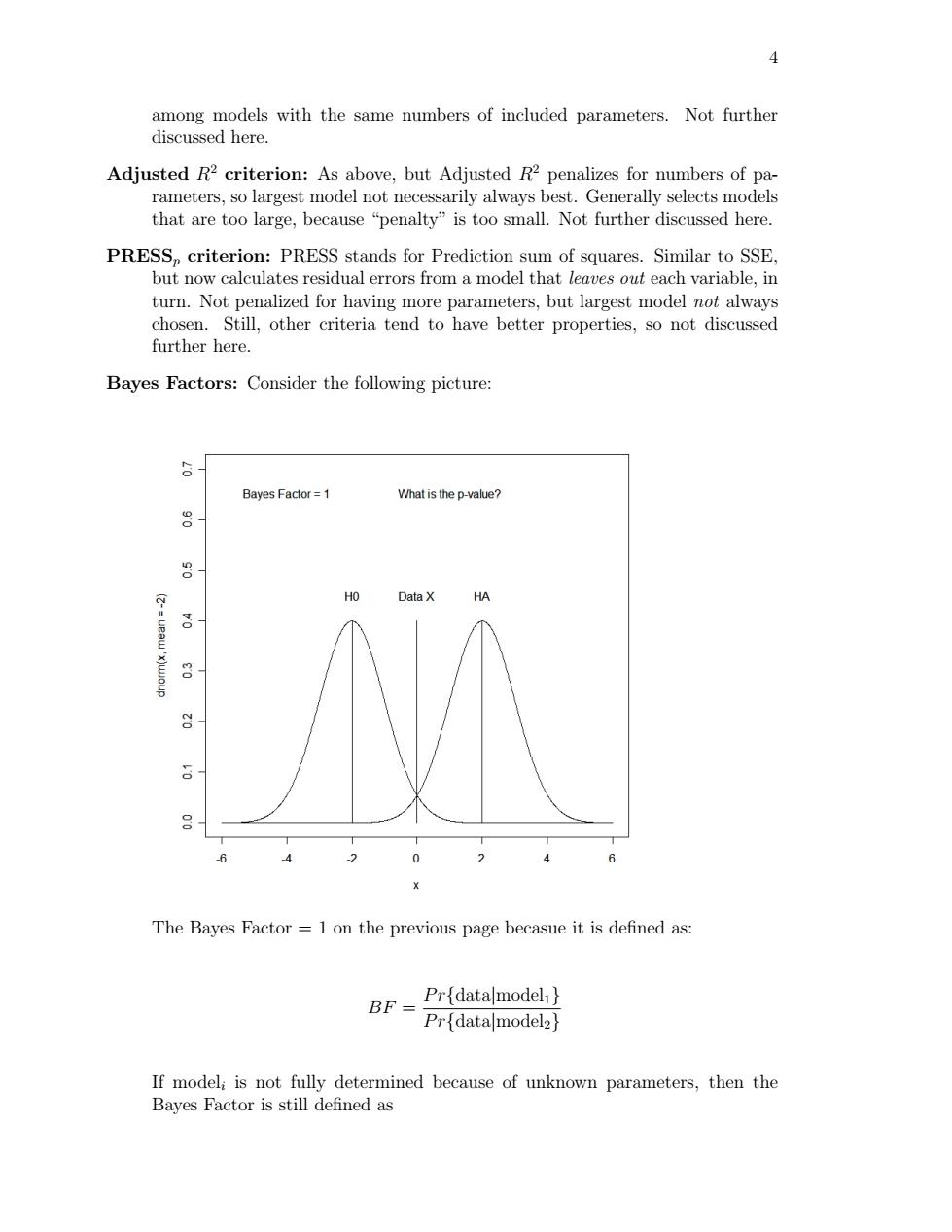正在加载图片...

4 among models with the same numbers of included parameters.Not further discussed here. Adjusted R2 criterion:As above,but Adjusted R2 penalizes for numbers of pa- rameters,so largest model not necessarily always best.Generally selects models that are too large,because "penalty"is too small.Not further discussed here. PRESSp criterion:PRESS stands for Prediction sum of squares.Similar to SSE, but now calculates residual errors from a model that leaves out each variable,in turn.Not penalized for having more parameters,but largest model not always chosen.Still,other criteria tend to have better properties,so not discussed further here. Bayes Factors:Consider the following picture: 6 Bayes Factor=1 What is the p-value? 8 HO Data X HA x)woup The Bayes Factor =1 on the previous page becasue it is defined as: BF= Pridatamodel Prfdatamodel2 If modeli is not fully determined because of unknown parameters,then the Bayes Factor is still defined as4 among models with the same numbers of included parameters. Not further discussed here. Adjusted R2 criterion: As above, but Adjusted R2 penalizes for numbers of parameters, so largest model not necessarily always best. Generally selects models that are too large, because “penalty” is too small. Not further discussed here. PRESSp criterion: PRESS stands for Prediction sum of squares. Similar to SSE, but now calculates residual errors from a model that leaves out each variable, in turn. Not penalized for having more parameters, but largest model not always chosen. Still, other criteria tend to have better properties, so not discussed further here. Bayes Factors: Consider the following picture: The Bayes Factor = 1 on the previous page becasue it is defined as: BF = P r{data|model1} P r{data|model2} If modeli is not fully determined because of unknown parameters, then the Bayes Factor is still defined as